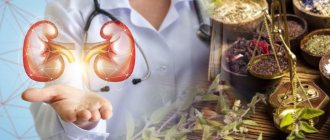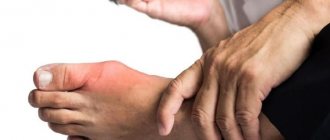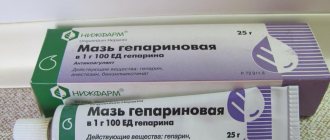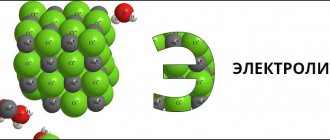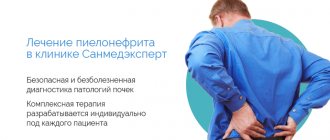Marijuana is a processed hemp plant that is most often used as a narcotic drug. This plant is usually smoked either mixed with tobacco or without any admixtures. Less often it is chewed or consumed with food.
Long-term use of this narcotic plant leads to serious physical and mental disorders. The key danger of using cannabis is the subsequent switching of a person to more serious drugs. All this will lead to a disastrous outcome.
Smoking cannabis causes addiction. Initially, mental dependence is established, which is characterized by a strong desire to reuse the drug. With prolonged use, physical attachment is formed, which is expressed in withdrawal syndrome. In this case, nervous tension increases, mood drops, impatience appears, appetite disappears, insomnia and chills appear, the person begins to lose weight, a feeling of heaviness is felt in the temples, chest, etc. The duration of the syndrome varies from five days to several weeks.
Using weed once leads to a distortion of the sense of space, it becomes difficult to concentrate, memory weakens, sounds and colors are perceived pervertedly, communication with the outside world is lost, thinking is fragmented.
Prolonged smoking of this plant provokes amotivational syndrome (so-called burnout). This disorder is represented by a gradual decrease in interest in work, family, and the outside world. This syndrome has been recorded in 40% of people who smoke cannabis systematically.
Content:
- What is marijuana
- The mechanism of action of cannabinoids on the body
- Symptoms of drug intoxication after using marijuana
- How to remove cannabis from your body at home
- How to quickly remove marijuana: inpatient treatment
Many people consider addiction to “weed” to be a harmless hobby, something like regular smoking. This opinion is promoted by the policies of some European countries where marijuana is openly sold and permitted for use. But narcologists are not so optimistic. Of course, cannabis is not as dangerous as, for example, cocaine, heroin or synthetic drugs. But often addiction to cannabinoids is the starting point for addiction to stronger psychostimulants. How to remove marijuana from the body? How to get rid of addiction?
How to detect drugs in the body?
A rapid test for marijuana is the simplest, fastest, and cheapest method of establishing drug addiction. After all, the sooner it can be identified, the sooner measures can be taken and prevent the situation from worsening. Cannabis in urine can be detected in a couple of minutes, spending 50-100 rubles. Tests are sold in every pharmacy, and if the product is not available, it will be delivered to order.
The following types of diagnostic devices are available to test urine for marijuana:
- test for marijuana only;
- test for marijuana and morphine;
- test for 12 types of drugs, including marijuana.
Blood from the ulnar vein is examined in the laboratory. At the same time, both natural marijuana and synthetic drugs made from it are detected with high accuracy. A blood test does not show the amount of cannabinoids, but always detects traces of them even after a single use. Tests for THC in the laboratory can be carried out by various methods - thin layer chromatography, gas-liquid or liquid chromatography, gas chromatography-mass spectrometry.
What is marijuana
Substances obtained from the Cannabis sativa plant have a narcotic effect. There are several hundred of them in total, but the psychotropic effect is most pronounced in tetrahydrocannabinol and cannabiol. The effect of cannabis on the human nervous system is largely determined by the growing conditions and plant variety. The maximum content of cannabinoids is in the flowering tops, less in the stems and leaves.
According to statistics, in the USA and Europe the most common is the crushed upper part of hemp (in the jargon it is called “weed”), in Russia and the countries of the post-Soviet space, hashish (anasha, “plan”, “dope”) - dried and compressed resin - is more often smoked , protruding on the surface of the plant’s flowers. At the same time, the psychoactive effect of “weed” is approximately 10 times weaker than hashish.
As a rule, for smoking marijuana is mixed with tobacco (“joint”), less common preparations are in the form of drinks, pills, or chewing mass.
The mechanism of action of cannabinoids on the body
Methods for quickly removing marijuana are directly related to the distribution of the drug in the body. The active components of hemp are highly soluble in lipids, so they preferentially accumulate in adipose tissue. Their metabolism occurs in the liver and lungs.
The narcotic effect of marijuana is associated with the suppression of the production and destruction of one of the main neurotransmitters - acetylcholine. Relatively recently (in the early 1990s), neuroreceptors were discovered in the brain that selectively interact with the active substances contained in cannabis.
Dependence on marijuana develops over a year and a half with occasional smoking, and within 2-3 months with daily smoking. Tolerance gradually increases, and after using the drug, performance and activity sharply increase. With a stable addiction, abstinence also develops, the signs of which appear 2–3 days without another portion of marijuana.
Table of drug removal from the body
How quickly different types of drugs are eliminated can be judged from the following table:
| View | Single dose | Systematic reception |
| Cannabis (Marijuana, Hashish) | 5-8 days | up to 2 months |
| Spice (synthetic cannabinoids) | up to 5 days | up to 1.5 months |
| "Bath salts" (Mephedrone) | up to 7 days | up to 2 months |
| Heroin | up to 2 days | up to 2 weeks |
| Methadone | up to 8 days | up to 3-4 weeks |
| Codeine (painkillers) | up to 2 days | up to 3 days |
| Cocaine | up to 4 days | up to 3 weeks |
| Amphetamine and Methamphetamine | up to 9 days | from 3 to 6 months |
| Ecstasy (MDMA) | up to 3 days | up to 1 week |
| LSD | up to 1 day | up to 5 days |
| Barbiturates (hypnotics and sedatives) | up to 2 days | up to 1 week |
| Antidepressants | up to 2 days | up to 2 weeks |
Symptoms of drug intoxication after using marijuana
For many, the first experience of using products with cannabinoids does not live up to expectations. Often drug intoxication does not occur; on the contrary, dizziness, nausea, and headache are possible. Actually, the “high” comes after 3–4 times, while a feeling of slight intoxication appears after 5–15 minutes.
Initially, there is excitement, which periodically gives way to anxiety. Characterized by talkativeness, a surge of strength, self-confidence, and a desire to share your thoughts with others. Soon a person loses the ability for consistent logical thinking, easily jumps from one topic to another, and cannot concentrate on anything.
The sense of time is lost, sounds seem louder, and colors seem unrealistically bright. Aggression after using marijuana is not typical, but it is a big one, which leads to the desire to break and destroy everything around.
Other signs of intoxication caused by smoking weed or hashish are:
- skin hyperemia;
- redness of the sclera (“rabbit eyes”);
- dilated pupils;
- increased dry mouth;
- tachycardia;
- increased breathing;
- hot flashes or chills.
The stage of intoxication lasts several hours and is replaced by a phase of depression. The colors of the surrounding world fade, thinking slows down, fantasies disappear, and a feeling of intense hunger appears. Subsequently, deep sleep is likely, lasting 6–8 hours.
What does marijuana addiction lead to?
Long-term use of this drug can become a trigger for various types of abnormalities: insomnia, bad mood, problems with appetite, pain.
Smoking weed leads to an altered perception of reality - sounds and colors. Memory will deteriorate, problems with thinking will arise, and interest in social interaction will be lost - with family and friends.
Swedish scientists conducted a large-scale study for 27 years. 50 thousand volunteers were involved. The results showed a clear link between smoking weed before age 18, active pot use, and the onset of schizophrenia in adulthood.
How to remove cannabis from your body at home
Despite the relatively short period of intoxication, cannabinoids are detected by laboratory methods 3–4 days after a single episode of smoking, and with systematic use they are detected several months later. They recommend fairly simple ways to remove marijuana from the body:
- drink as much fluid as possible;
- exclude from the diet dishes with animal fats or too much vegetable fats: sauces (mayonnaise, tartar, etc.), fatty meats and poultry, fast food, foods fried in batter or deep-fried, etc.;
- limit milk and dairy products;
- eat as many vegetables and fruits and greens as possible (in particular, spinach, Brussels sprouts, broccoli);
- completely give up alcohol and tobacco.
Another method to quickly remove marijuana is to speed up your metabolism. This effect can be achieved with moderate physical activity (jogging, cycling or exercise bike, swimming), visiting the sauna (with caution in case of hypertension and tachycardia). You can stimulate metabolic processes with the help of decoctions and teas with ginger root and yarrow.
Separately, it is worth mentioning the use of medications. Indeed, detox products help solve the problem of how to remove cannabis from the body. But self-medication is dangerous; the only medications that can be taken without the risk of complications are hepatoprotectors and multivitamin complexes (it is better to give preference to capsules with B vitamins).
Effective ways to remove marijuana
Toxic THC is released from urine within about a week. If the upcoming blood test is not performed using complex chromatographic methods, the elimination of marijuana can be accelerated. At the same time, it will be possible to remove THC from the urine, but not from the hair follicles. Of the latter, cannabinoids are evacuated only as hair grows. And this process takes from 2 months to six months.
Home Remedies
People with drug addiction who smoke “weed” or use manga rarely worry about the content of its toxic metabolites in the blood.
As a rule, they are denied jobs that require quick reactions based solely on their appearance: dilated pupils, trembling fingers, gray, flabby skin. But with a one-time use of the drug, sometimes there is an urgent need to quickly get rid of traces of marijuana in the blood.
Metabolism will speed up by eliminating high-fat foods from your diet. This is fast food, smoked meats, semi-finished products, salads generously flavored with mayonnaise. Drinking plenty of fluids will also help cleanse the blood, forcing diuresis. It is necessary to drink at least 2.5 liters of liquid per day - ordinary and lightly salted mineral water, fruit compotes, berry fruit drinks, vegetable juices.
Fruits and vegetables with coarse fiber - carrots, apples, radishes - bind cannabinoids well and remove them from the blood and gastrointestinal tract.
Medicines
To avoid detecting traces of marijuana in the blood, you can use pharmacological drugs. They are used for accelerated evacuation of tetrahydrocannabinol metabolites.
The most effective medicines:
- enterosorbents - activated carbon, Polysorb, Enterosgel. They bind toxins on their surface and then remove them from the body;
- diuretics - Veroshpiron, Hypothiazide, Lasix - increase the frequency of urination, stimulating the evacuation of marijuana.
Detecting traces of cannabis will be difficult if you take medications containing B vitamins for a week. These are Pentovit, Milgamma, Neurobion, Combilipen.
How to quickly remove marijuana: inpatient treatment
Detoxification in a specialized clinic is the best way to remove cannabis from the body. In addition to a detoxification drip containing solutions of electrolytes and nutrients, the medical center also offers patients access to hardware methods of blood purification: ILBI, plasmapheresis. Physiotherapy (massage, acupuncture), electrosleep and other therapeutic measures, and a properly formulated diet will help improve the patient’s condition.
In addition, detoxification at Ugodiye can be the first step in drug addiction treatment. According to clinical studies, without treatment, one in five people addicted to marijuana experience personality changes (symptoms are largely similar to paranoid schizophrenia). After detoxification, specialists offer supportive treatment, psychotherapy, hypnotic coding, and rehabilitation.
Need some advice?
OR CALL A DOCTOR
CALL!
+7
